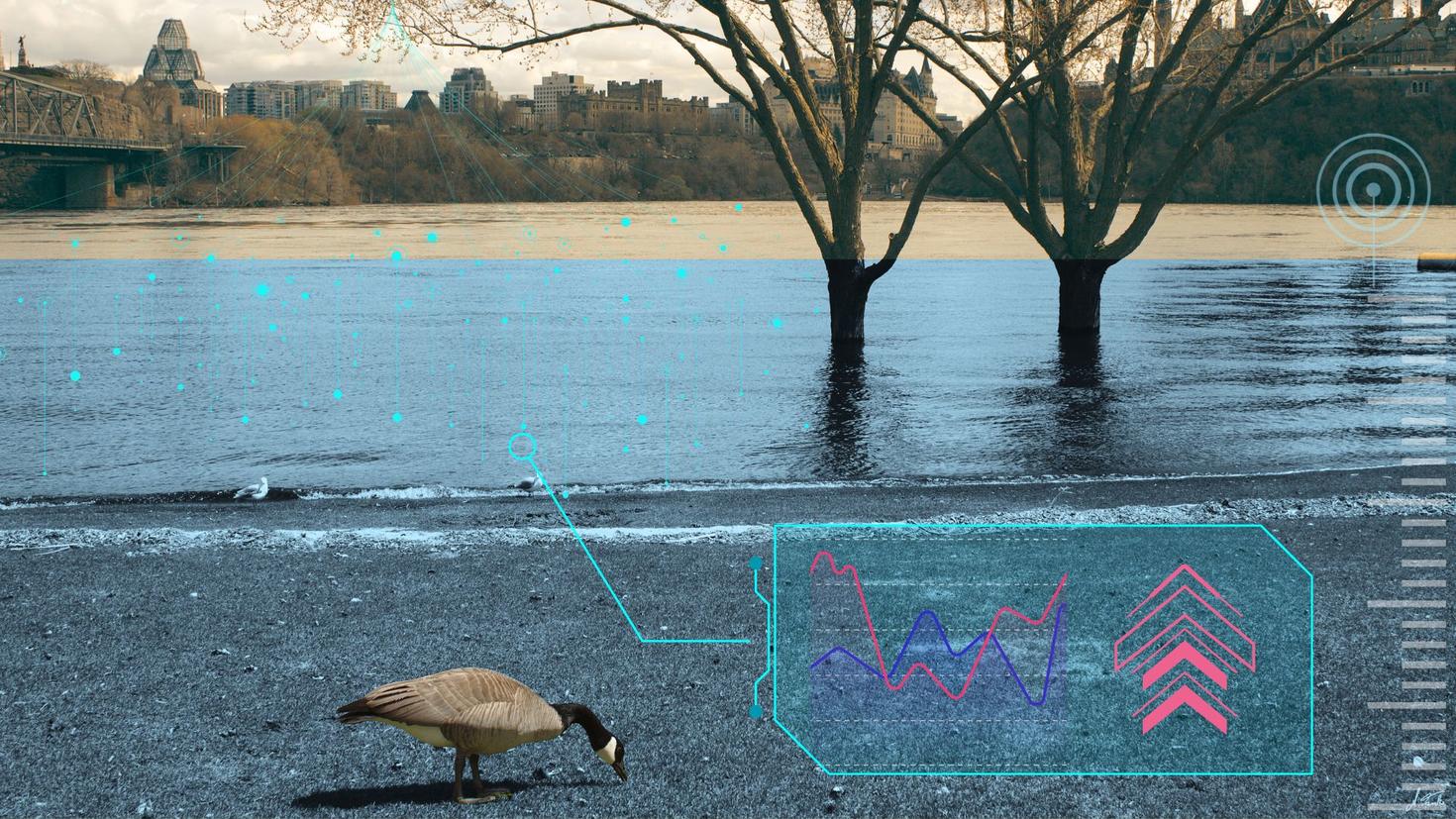Professor Ousmane Seidou was not anticipating becoming a leading expert in the fields of hydrological modelling, climate change, and water resources management when he first started his career as a researcher. He was initially involved in the fields of mathematics, statistics and computer programming. However, because “climate change and floods are the number one issues in that area, I naturally began including them in the work I was doing,” he says. Seidou is now actively involved or has worked on international projects related to floods in Canada, the United States, Morocco, Ethiopia Senegal, Ghana and Niger.
“The global tendency is that floods are becoming more frequent and more devastating as time goes by,” Seidou says. He explains that there are multiple reasons for this. First, climate change is causing the Arctic permafrost to melt slowly, and Canada is expected to become wetter in the future. Second, urbanization and deforestation have changed the landscape in the past 50 years, increasing surface runoff.
Moreover, because the value of infrastructure and property in the floodplain keeps ballooning, this also means that we’ll be faced with greater losses in the event of a disaster.
One area that Seidou has been focusing on is the monitoring of signs of current and future floods. Through data science and software engineering, Seidou is creating models that can analyze current areas at risk, to predict floods and mitigate their effects.
Monitoring floods also allows us to inform people so they can prepare. “They can then implement emergency measures, such as evacuation plans and sandbags,” Seidou says.
Are we prepared for floods this spring?
In terms of how well we’re prepared for floods this spring, Seidou says that “floods have varying magnitudes. They can go from severe to catastrophic, and the level of preparedness of a given city is somewhere in the middle.”
As for which communities most at risk, according to Statistics Canada, the regions of Pontiac and Sainte-Marthe-sur-le-Lac in Quebec are the most affected, with 29% and 25% of dwellings, respectively, at risk, but Seidou says, “vulnerable areas can be found throughout the country.”
As climate change and floods continue to be concerns, being proactive by identifying areas that are more vulnerable and having safety procedures in place can help better prepare.
That said, Seidou believes that Canada is better equipped to face floods than other countries because we are actively investing in this area. “We have a good monitoring system and forecasting capabilities; we know when a flood is likely, and it generally finds us prepared.”

“We know when a flood is likely, and it generally finds us prepared.”
Professor Ousmane Seidou
— Director, Hydraulics Lab and Associate Professor
Professor Ousmane Seidou is a leading expert in the fields of hydrological modelling, climate change, and water resources management. Before joining the University of Ottawa in 2007, he received his undergraduate degree in civil engineering at École Mohammadia d’ingénieurs (Rabat, Morocco) and worked as a civil engineer in Niamey, Niger. He then received a postgraduate diploma in applied computing, followed by a master’s and PhD in water resources from Montreal’s École Polytechnique.

